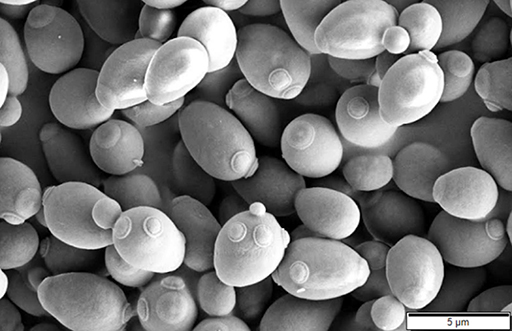1.3 Yeast
You first met yeast in Week 1 when you were introduced to the fermentation process.
What is the role of yeast in fermentation?
Yeast converts sugar into alcohol and carbon dioxide during primary fermentation in brewing.
Yeast is a type of fungus, with over a thousand different species identified so far. However only one or two of these are used for brewing: Saccharomyces cerevisiae (Figure 5) and Saccharomyces pastorianus. These are also known as ale and lager yeasts in the brewing industry.
In fact, you may be familiar already with the ale yeast Saccharomyces cerevisiae, in particular if you are a keen baker. This species of yeast is more commonly referred to as baker’s yeast and is used widely in breadmaking and baking. Saccharomyces pastorianus is a yeast used industrially for the production of lager and was named in honour of the French biologist Louis Pasteur (1822–1895).
These different strains of yeast ferment optimally at different temperatures, with ale yeasts preferring temperatures in the range 17–24 °C, and lager yeasts preferring temperatures in the range 8–14°C. The higher temperature for ales results in a faster fermentation, with more flavour compounds being produced. Lagers, however, take longer to ferment and have less flavour from the yeast.
In Week 4 you will learn about a further role of yeast other than in the primary fermentation. Yeast is also actively involved in the secondary fermentation or conditioning process which further enhances, and adds to, the flavour of the finished beer.

